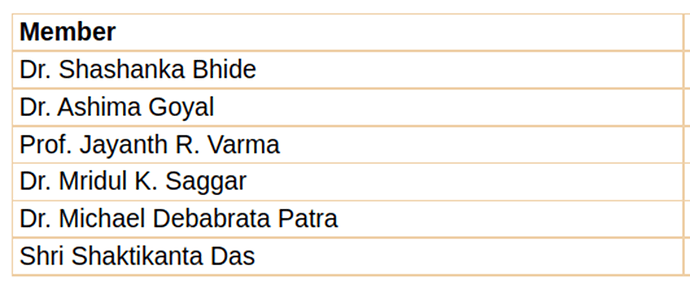The meeting of the RBI monetary policy committee is currently underway. You might have heard of terms like repo rate, reverse repo, etc. What do all these mean?
Here’s a simple explainer with all the key highlights and what they mean to the economy ![]()
The RBI monetary policy committee consists of six members, of which three are RBI officials and three are external members nominated by the Government of India and must meet at least four times a year.
The main objectives of RBI are to ensure price stability and growth while ensuring that the banking system functions as intended. It tries to meet these objectives by controlling the interest rate (repo rate) in the economy.
The Reserve Bank of India has formulated a policy related to the country’s monetary affairs. The policy comprises measures to regulate the supply of money, cost of credit, borrowing & lending rates, etc. This is called the RBI monetary policy.
A look at various RBI rates and what they mean:
Repo Rate: This is the rate at which the Reserve Bank lends money to commercial banks like SBI, HDFC Bank, ICICI Bank, etc. The current Repo Rate stands at 5.4%
Reverse Repo Rate: This is the rate RBI offers commercial banks for depositing money with the central bank. The current reverse repo rate stands at 3.35%.
Cash Reserve Ratio: This is the share of total bank deposits each bank has to keep with the RB in cash. The core objective of CRR is to help eliminate liquidity risk and regulate the money supply in the economy.
The current CRR is 4.5%, which means for every Rs. 100 worth of deposits, the bank has to maintain Rs. 4.5 with the RBI.
Statutory Liquidity Ratio: Also known as SLR, this is the percentage of deposits a commercial bank has to maintain in form of cash, gold, Govt. bonds, or other securities. This is not maintained with the RBI but within the bank itself.
The current SLR is 18%, which means for every Rs. 100 worth of deposits a bank has to maintain Rs. 18 in the above assets.
The primary objective of the SLR rate is to maintain liquidity in financial institutions operating in the country.
Of the above rates, the repo rate is the most important. Think of the repo rate as the cost of money. If the cost of borrowing money for banks goes up, they will pass it on to us. So when repo rates go up, interest rates on home loans, personal loans, and credit cards go up.
The RBI controls the repo rate based on the economic environment. In a weak economic environment, it cuts interest rates. The idea is that, when the economy isn’t doing well, lower rates can lead to people and companies borrowing, which they spend which leads to economic growth.
But too much growth can also lead to inflation, or the price of goods increasing. Inflation can be a result of both internal domestic factors like strong demand and external shocks like supply chain issues, rise in prices of commodities like oil, iron, gas, coal, etc.
So when there’s inflation, RBI tries to control it by raising interest rates. The idea is that if the cost of borrowing increases, people will spend less and the excess demand will come down leading to economic moderation.
Other key terms you might have come across are there. Neutral, Accommodative, Dovish and Hawkish.
Here’s what they mean ![]()
Neutral: A neutral RBI stance means that it doesn’t have a strong view since things seem fairly balanced in the economy.
Accommodative: accommodative stance indicates a willingness on the part of the central bank to expand the money supply and cut interest rates.
Dovish: Dovishness implies that the RBI is likely keep interest rates low and won’t react in a hurry by raising rates.
Hawkish: Hawkish is a term used to describe the central bank’s stance wherein they are likely to increase the interest rate in the future.
For more, do check out this video from @Karthik , In this video, Karthik explains what is inflation, what causes it and how central banks like RBI try to control inflation.
Along with this, check out these chapters on Varsity ![]()
Key Events and Their Impact on Markets:
Basics of Macro Economics:

